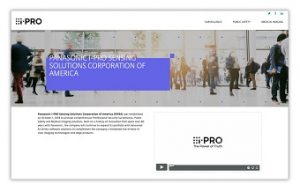
Following last year’s spin-off from the parent company, Panasonic i-PRO Sensing Solutions announced on that it will be changing its global brand to i-PRO. According to Bill Brennan, President of Panasonic i-PRO Sensing Solutions Corporation of America (PIPSA), the new branding is not simply a marketing change for the company but rather is reflective of a shift in how it operates and approaches the market.
For example, Panasonic historically has been more heavily focused on large, project-based video surveillance deployments than on small and medium-sized businesses. However, with the flexibility they enjoy as a result of the spin-off, they are now launching solutions to address the needs of the mid-market.
“Under Panasonic, we were held to very tough inventory because we were a smaller piece of a much larger organization, an organization that really didn’t have the same business model as security,” Brennan told members of the media during a virtual press conference announcing the move. “So, we struggled a lot in terms of our product availability. It was a struggle and we understand the security business. The security business is a lot like the construction business, we owe it to our integrators to ensure we meet the demands of their projects.”
“The significant difference between Panasonic and the new i-PRO is we are flexible and much faster than Panasonic time,” said Masami Eguchi, Executive Vice President at PIPSA.
The new company comprises the three different business units in the U.S. The Professional Security Surveillance unit provides IP and analog video surveillance, access control and analytics solutions for commercial security applications. The Public Safety business offers video solutions for law enforcement, such as body worn cameras, in-vehicle video systems, evidence capture and management software, and intelligent analytics.
As part of the company’s newfound flexibility, Brennan said that it would also be targeting several verticals that they had not had a large presence in before, namely education and mid-sized municipalities. “We are very much focused on education and what we found is not only do we offer the education market incredible benefits from a technology standpoint but we also understand the market in terms of how they acquire products and what they need to budget products long term,” he explained. “Many of the benefits to K-12 relate also to midsize municipalities. We’re not looking to go after the grandiose (city projects). We have a third-party partner that does a fantastic job in the major cities, but we focus primarily on the secondary markets, like a Grand Rapids-sized city.”











